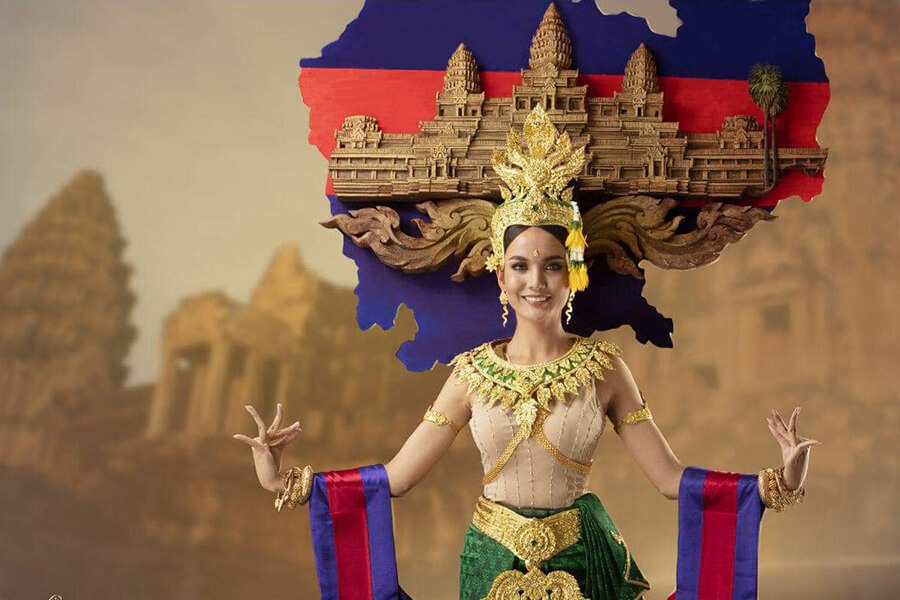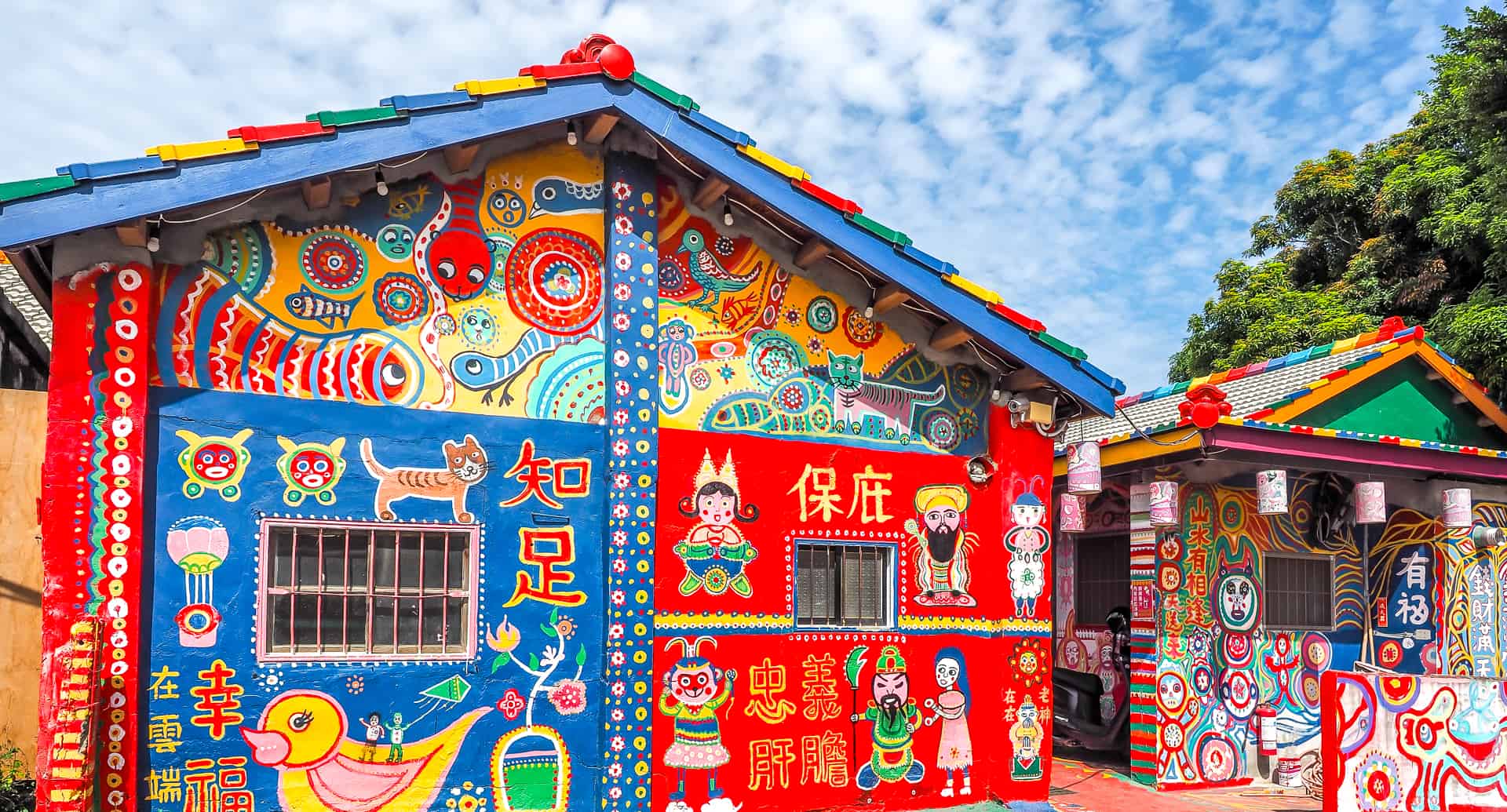Cambodian Traditional Dress
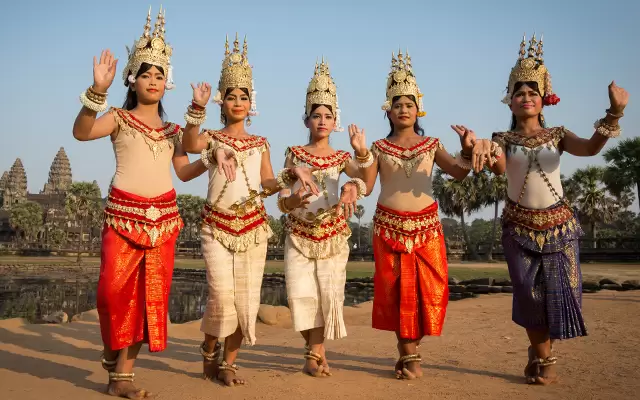
Cambodian Traditional Dress – Costumes in Cambodia
Cambodia is one of the few countries that still maintains many traditional values, including its traditional costumes. Learning about Cambodian traditional costume is also an excellent factor to make your Cambodia trip more enjoyable.
Nowadays Khmer traditional dresses are worn by the Khmer people in special occasions like the festival ceremony or wedding. These garments look gorgeous because they are carefully designed and well made to small details. Cambodian traditional costume is the pride of Khmer culture and perfectly preserved up to now.
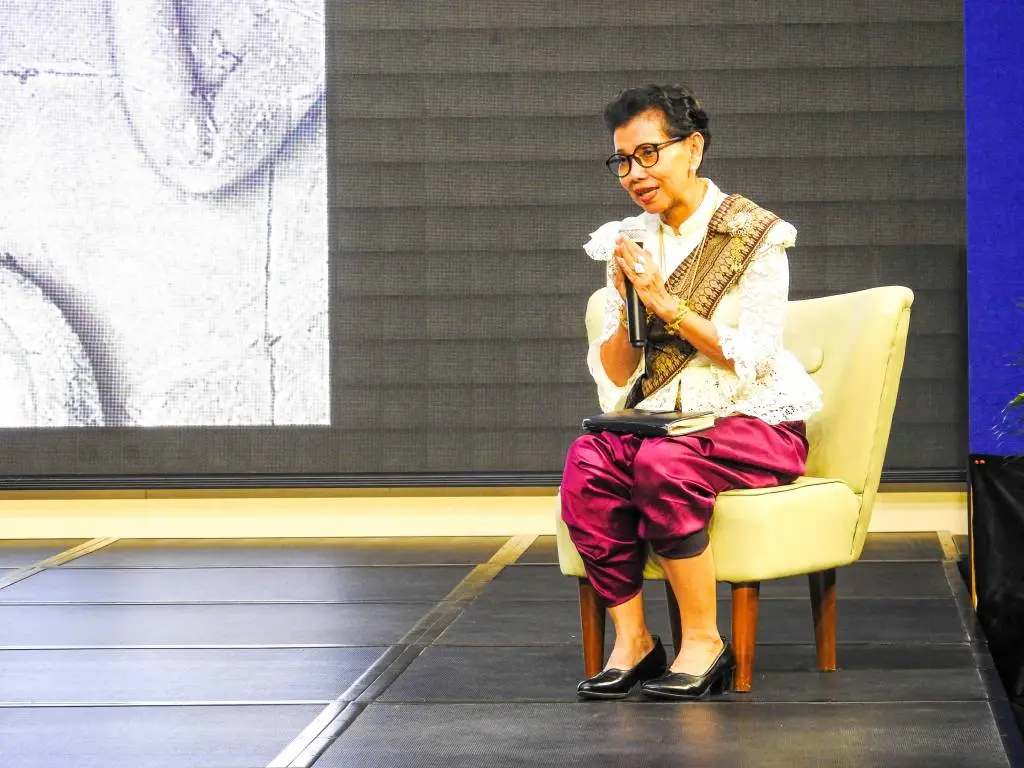
1. Sampot – Cambodian National Clothing.
Sampot is the traditional garment created, developed and preserved by Khmer people in Cambodia. This costume has the long history dated back to the Funan Era when Cambodian King ordered his people to wear sampot at the request of Chinese envoys.
Sampot is the large rectangular piece of cloth, which usually has a length of five to six feet, is wrapped around the lower part of the body and tied up at the belly with various colors and patterns. This cloth can be draped and folded in different ways and several variations, depending on the specific occasions as well as social classes. Silk is the main material to weave sampot and it’s often dyed in five colors: red, yellow, green, blue and black. Khmer people apply complex methods and intricate patterns to make the cloth, including the “hol” method which involves dyeing patterns on silk before weaving.
Together with sampot, Cambodians wear Chang Pong at the upper half of the body. This cloth crosses shoulders and covers the breast of the woman, reveals a bit belly to symbolize the charming beauty of Khmer women. There are several types of Sampot, each type worn by a certain class.
1.1. Sampot Chang Kben
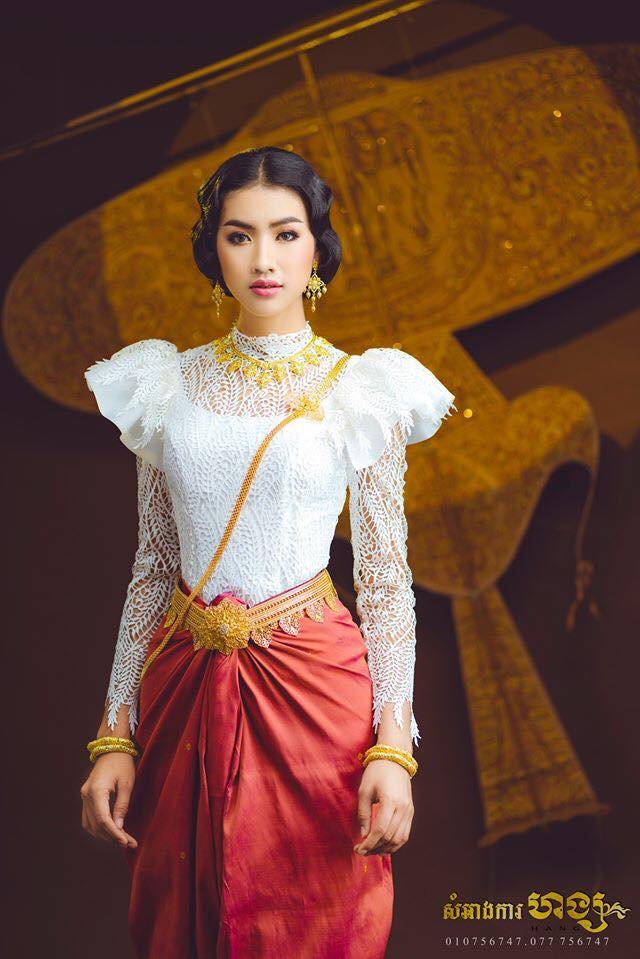
Sampot Chang Kben is not a skirt but a rectangular pant, and longer than other sampots, with measures of 2.7m long and 1m wide. It’s worn by wrapping around the waist, covered along the body, and a small knot in front of the belly is tied and held in place by a sparkling belt.
In the past, this sampot represented for middle and upper class female for day-to-day wear. These clothes are made by high class materials and decorated with many patterns revealing the class whose wear it is such as the flower or graphic sinking motifs.
Nowadays, all Cambodian women wear Sampot Chang Kben at festivals or special occasions.
1.2. Sampot Phamoung.
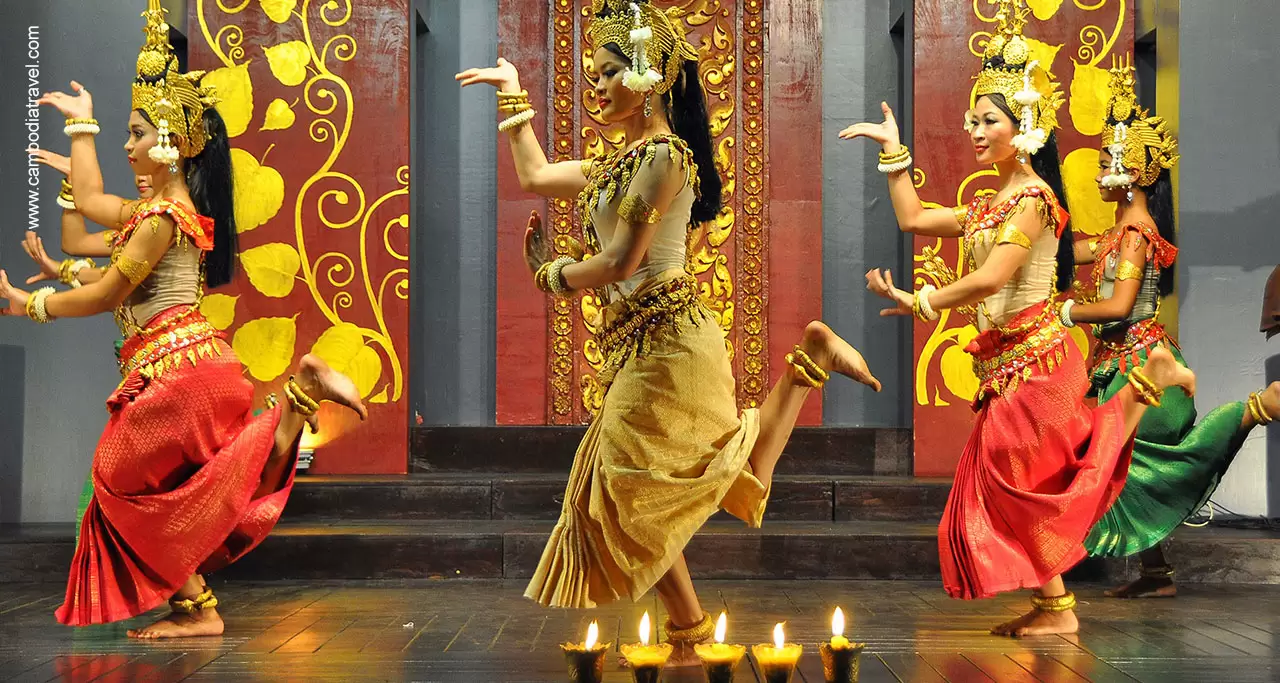
Apsara dancers wear Sampot Phamoung.
Sampot Phamoung is another type of sampot which is a very popular weaving fabric from Cambodia. On the Sampot Phamuong, there are 52 different colors used in and twill weaved on the surface. The luxurious Sampot Phamoung fabric is created by 22 different needles, combined with countless paintings, floral and geometrical patterns. These patterns are divided into some variations such as chorcung, kaneiv, rabak, bantok, and anlounh. Especially, yellow silk – the main material for a Phamuong – is the most famous silken satin in the Kingdom of Cambodia due to its excellent quality.
1.3. Sampot Hol.
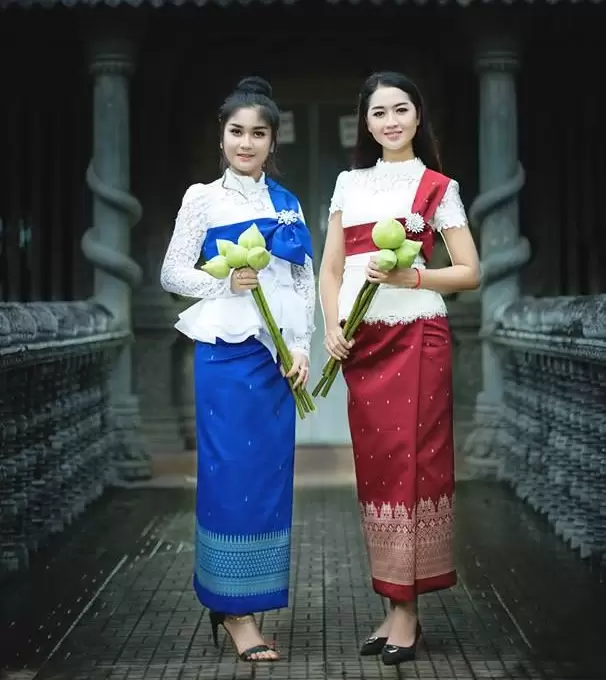
Sampot Hol is influenced by Indian patola fabrics.
Another popular sampot in Cambodia is Sampot Hol with two basic types: common dress and cross-woven dress. This style of sampot is influenced by Indian patola fabrics and today’s subtle Hol fabrics have experienced a period of development of patterns and knitwear.
The Sampot Hol is a wrapping skirt, consisting of over 200 patterns with 3 or 5 colors, like yellow, brown, red, green, and blue. Flowers, geometry and animals are the main motifs found in the Sampot Hol. Cambodian weavers use traditional techniques as “chong kiet” and twill weave to create Sampot Hol.
In addition to the three most popular sampot types above, Cambodians also have many various types of costumes with their own distinctive features. To name a few: Sampot Tep Apsara, Sampot Samloy, Sampot Chorabap, Sampot Sâng, Sampot Seai Sua, Sampot Lberk, Sampot Alorgn.
2. Krama – Cambodian Traditional Scarf.
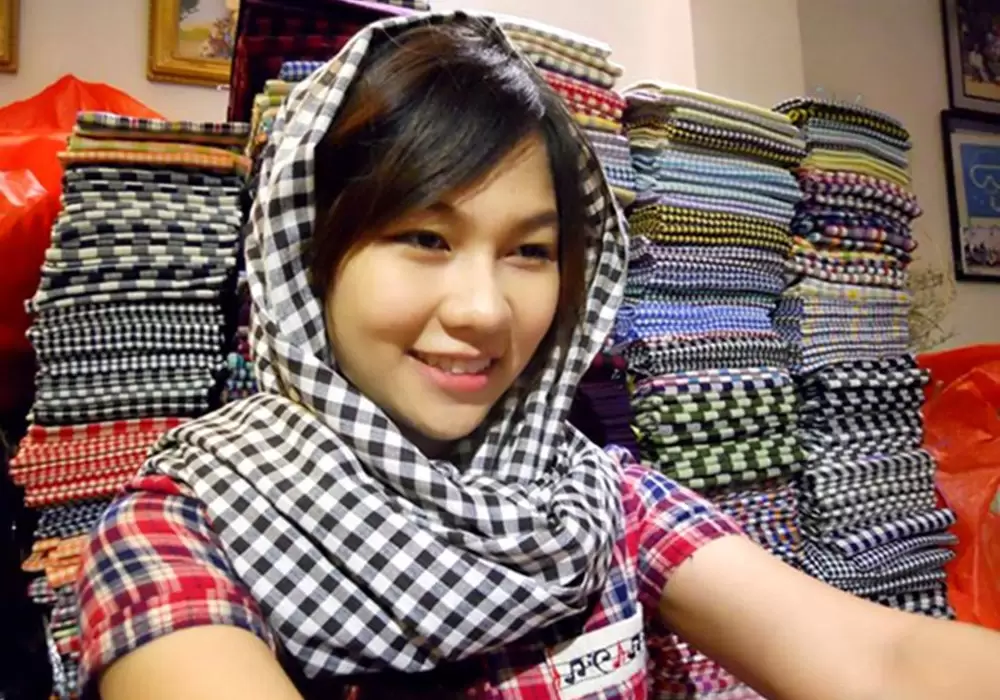
Krama – Cambodian traditional scarf worn by every Khmer people.
Krama is a sturdy traditional Cambodian garment worn by men, women and children. It’s so popular that every Cambodian owns at least one. The most typical kramas contain a gingham pattern of some sort, and traditionally come in either red or blue. Due to the hot weather and habit of working in the paddy field, farmers wrap Krama scarf around their head under the large hat. So it’s the perfect tool to protect themselves from the sunlight as well as absorb sweat that constantly drip down their face in hot and sunny working days.
Interestingly, krama is also used as a hammock for infant, regardless of whether you’re in the city or provinces. Another common use of karma in the countryside is that it’s wrapped around the feet as protection when one scaling trees and used to carry objects in. Although being originated from rural areas, karma is also widely used by urban Cambodians as a fashion items, hanging around the neck like a scarf. Modern karmas are available to buy in any of the markets in tourism towns and cities. They come in a range of sizes, colors and quality, and can be an interesting souvenir brought back home after your Cambodia trip.
